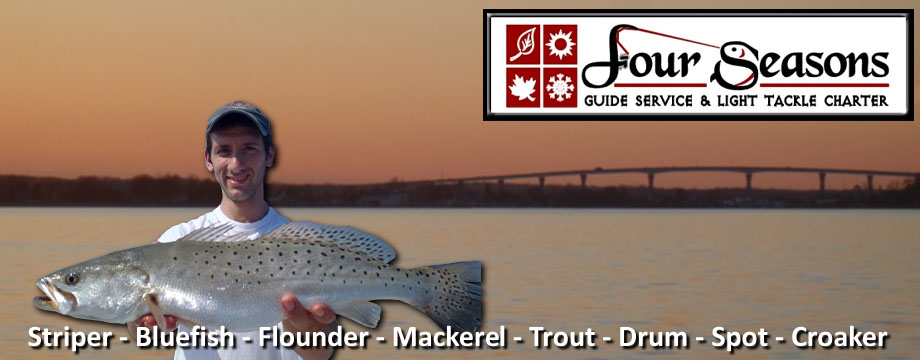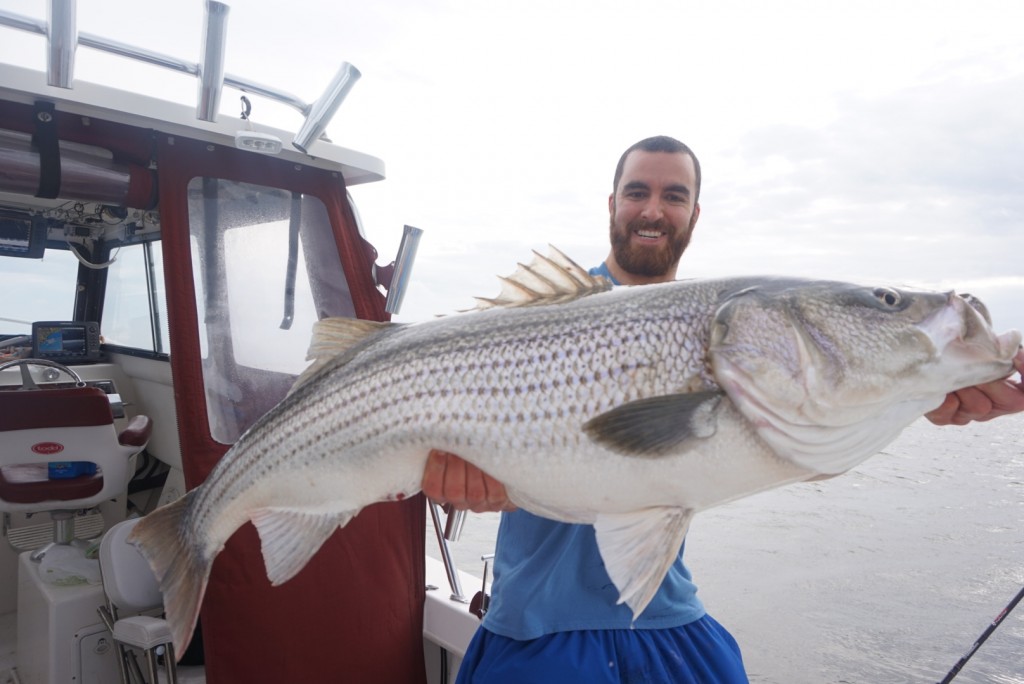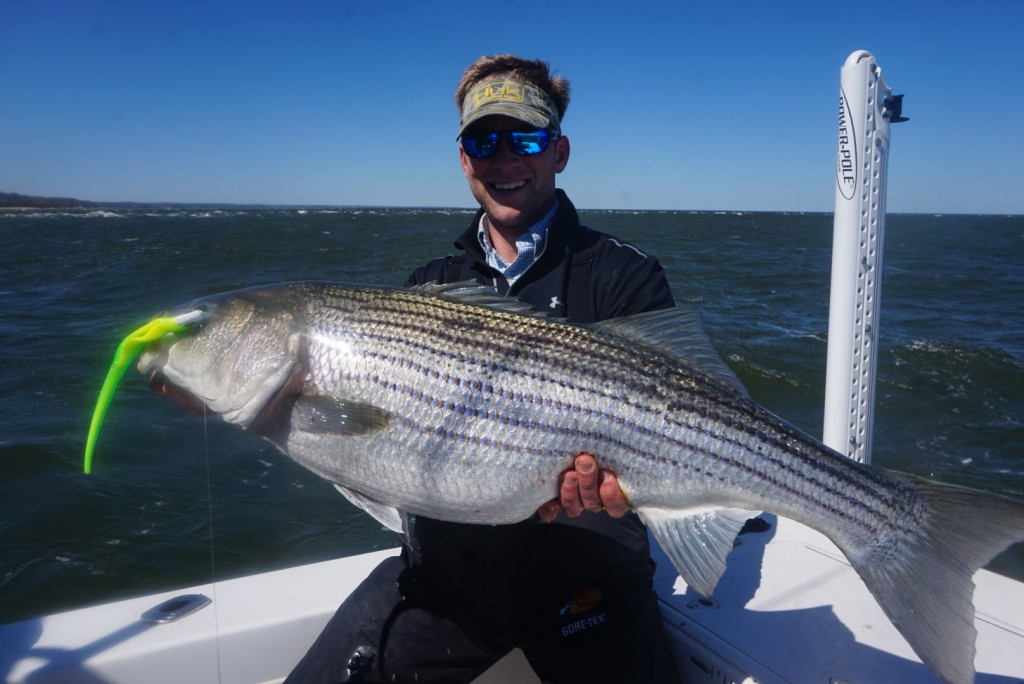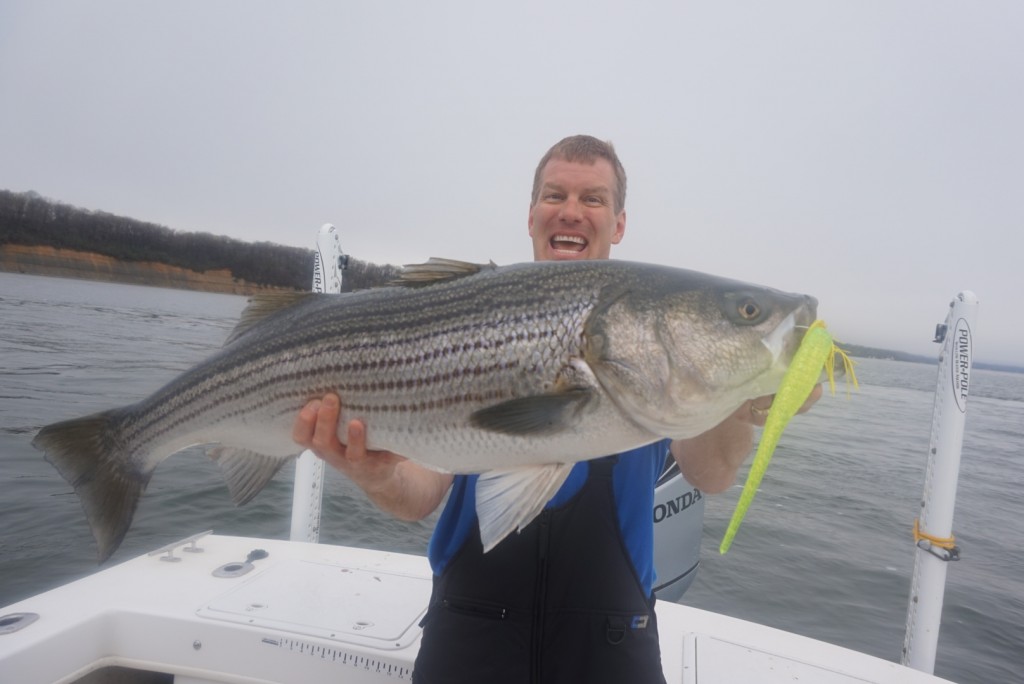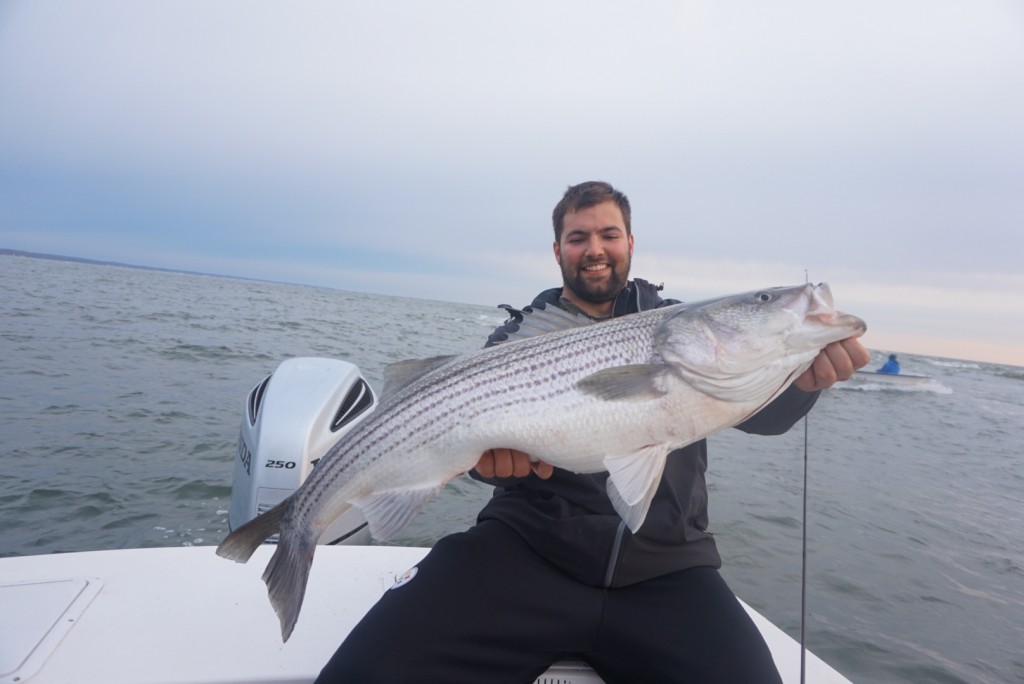Join My new Private Group on facebook: ” Live at Calvert Cliffs With Walleye Pete”
After you Read the preview check out the Videos! Good stuff!
Light Tackle Jigging Stripers On Chesapeake Bay in March! – an incredible trip at calvert cliffs with friends and I happen to be ambitious with the video this day…..good stuff!
April Fool’s Stripers – One of the best days ever at the plant! Check it out!
Calvert Cliffs, Marylands Striped Bass Off Season Catch and Release Heaven – a ton of pictures of big fish from last 4 years at calvert cliffs
50lbs Striper on Light Tackle in Chesapeake Bay – a quick look at the biggest Striper caught on my boat!
–disclaimer– I wrote this quickly with passion…….their may be some typos and mis spellings….but I hope you get the idea……..i don’t have time to make it grammatically perfect. Read on!
Winter at Calvert Cliffs
Well folks, it’s that time of year where the winter fishery at Calvert Cliffs will soon be taking hold. This will be my 20th year of jigging huge stripers at Calvert Cliffs in the winter. Winter for me being Jan-April 15 or so. What I’ve learned through 20 years worth of catching and journal entries on fishing calvert cliffs is every year, month, day, hour and minute can be different. What I do know for sure is if you don’t go you won’t know if a bite is there. Another thing for sure is we are lucky to have a place in Chesapeake Bay where in the winter you can go and have a shot at a bent stick and a hopeful great memory. The chance at a mammoth at 48″ or more is possible and 40″ers are not uncommon. For the last several years almost all my 40″+ fish have come from Calvert Cliffs in the winter till early April. The late fall fishery is great with many fish to 35″ but very few over. Seems as though the huge migratory fish which used to show abundantly in November/December in Maryland waters haven’t shown well in years. Many opinions exist on where they went. My thought is their are many less of them and the ones still in existance aren’t coming up Chesapeake Bay in the late fall/early winter before heading to near shore or offshore waters from Virginia down to North Carolina.
Through the years I’ve had a few fish at 50″ or a hair over and countless 45-49″ers. The over 40″s can be incredible in numbers at times. I literally have thousands of huge fish pics through my 20 years of winter fishing at Calvert Cliffs. Styles of fishing varies at Calvert Cliffs and some days many boats share the same water trying to hook the big one. Every year when cold winter turns to spring and air temps warm up so do folks ambitions to get their boats on the water. Late march and early april Calvert Cliffs can see as many as 30 boats fishing a nice weekend morning. Typically this will slow down the success of catching. In the cold winter Jan/Feb sometimes catching can be incredible and sometimes it stinks. Ya never know. My intention with this preview is to highlight the importance of safety while angling in the winter, the different catching techniques I’ve experienced to work the best, angling etiquette and fish safety.
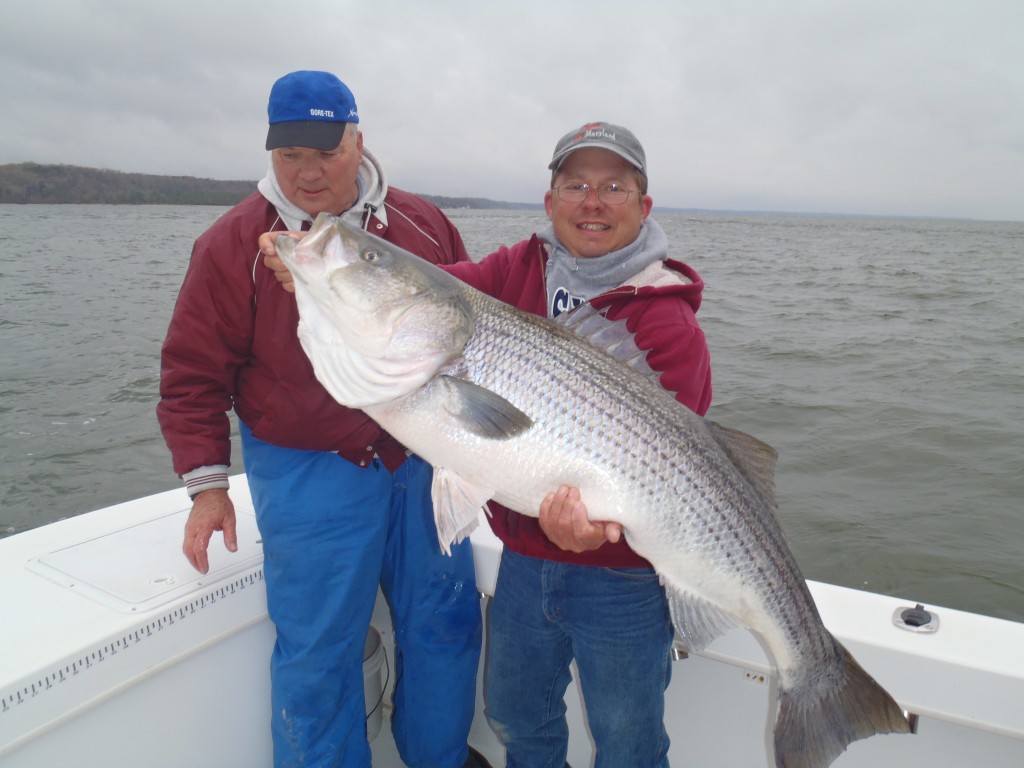
Biggest my boat has had at Calvert Cliffs,
about 4″ past the 48″ tape and very heavy,
we don’t weigh fish in fear of injuring them
IT’S FUN! That’s it………..
I may ruffle a feather or two here but this is what I think……..after 20 seasons of catching huge fish and watching others catch huge fish at Calvert Cliffs in the winter it isn’t a big deal. It’s a BLAST but not a legend maker for sure. If you are local to Calvert Cliffs like me or an angler who plies the water of Calvert Cliffs several times a year, month or week it really isn’t difficult to catch big fish at Calvert Cliffs in the winter. It’s a goldfish bowl with 2 million gallons of water blowing through it with boulders on the bottom from 18′-30′ deep. All the experienced anglers know the fish hold at the bottom or very close most of the time and are in certain areas of the rip most of the time. The experienced anglers position themselves to cast to and present their 1.5 to maybe 3 ounce jigheads into the current upstream of where they know the fish should be……detect bottom with their heavy lead head with BKD or Bust’m bait or any other plastic and aggresively and sharply jig (twitch) their sticks while maintaining a snug line as their bait gets blown downstream. The massive current pushes their baits downstream quickly allowing their bait of choice to cover the bottom in the area they think the fish are located. If fish are in the zone of presentation they typically will inhale the bait. The experienced angler detects the “thump” of the large striper inhaling the bait and sets the hook……the fight is on! This does require skill but zero challange once mastered. It is one heck of alot of fun though! Have Fun!
Fish Anyway You Want!
No person, club, group or FACTION own the power plant fishing rights. All folks who go there can choose to fish the way they want. Trolling, bait slinging and anchoring is not against any law and if it happens then so be it. There are some things I think can really mess fishing up and I’ll talk about them. My opinions are that…..an opinion, I really don’t know, no human knows! NOTHING worse than a person who knows it all when they really don’t! What I’m writing about is what I’ve experienced and what has worked best for me through the hundreds of trips at the power plant in the winter. If you have another technique not described that works for you it’s all good! One thing that I’ve learned with over 3000 guided fishing trips is to adapt and overcome and keep on truck’in. I practice what I preach and will keep on truck’in no matter who does what at the power plant. It’s all good!
DANGER
Personel safety at calvert cliffs is very important. We all know cold water kills very fast. A NNW, N, NE, E or ESE wind at 15 knots and more really starts to rough it up at Calvert Cliffs. Two million gallons a minute flowing against wind coming from the opposite direction makes for very confused seas and dangerous conditions. Catching can be great in bad conditions there but I don’t recommend taking your boat there unless you have experience with the rips in nasty winds. S, SW, W and NW is fishable with some nasty wind. SW is best…..comes from right over the power plant. Proper communication and all safety equipment is crucial to have on board at all times but especially in the winter. If the wind is blowing hard and you are there it’s best to stay on the downwind side of the current. It’s best to have the wind in a position to blow you out of the current when rough. A fatal mistake could be to get blown into the current with a nasty wind from the bad directions I noted above. Here is what happens: your boat turns with the wind facing downwind and the current is taking you stearn first down the current. Waves are very close and high. If you have a low stearned boat or cut out like a 21 parker or similar boat you will take waves over the back and possibly submerge your boat if your engine won’t start and you take on water. It happens fast! DON’t Let This Happen……..you could die. If you have any questions about this stuff feel free to text or email me.
Bait and Equipment
Equipment I use at the power plant are 6’medium or 6’6″ medium heavy rods which allow you to detect the slightest of hits and the tick of detecting bottom. I use 14 or 20 pound test flame green Fireline. I use this because I can see it above the water and no stretch allows for great detection of bottom and hits. When multiple folks have fish on they can see where there lines are crossing so they can go over or under in order to not lose a fish because of tangled lines. I use a 30 pound test clear leader at about 2′. It’s strong enough for big fish and not to thick to tie directly to your fireline. I never use swivels…..they fail and break eyes on rods. I use 3500 or 4500 size spinning reels at Calvert Cliffs on the big Stripers. I’ve been using Penn Battles mostly.
The Baits I use are exclusively BKD’s www.basskandydelights.com. I like chartruese glitter when it’s sunny, white anytime and purple glitter in low light. Tipping baits with different color garlic stuff can’t hurt. 6″ and 10″ baits work great. When big fish are around no baits catch and last longer than the 10″ BKD. I use 1.5 to 2.5 ounce jigheads for my BKD’s. The heavier the jighead the easier to detect bottom…..also more expensive to lose, I use mainly 1.5 ounce jigheads.
Techniques, it’s all good!
Two different techniques are used mostly at Calvert Cliffs. Some experienced guys at Calvert Cliffs like to position their boat just on the outside of the current. Casting a 1.5-2.5 ounce jighead upstream and across the current in a position to have the jig touch bottom adjacent in the current to the boat. if you touch bottom upstream it’s very easy to get snagged……touching bottom adjacent to the boat or just down stream from the boat is ideal to not get snagged and to work the jig down the current and at the bottom where you hope the fish are holding. This technique is not an exact science and will require practice and you may or others may do it a bit different than described. On my boat I preach a short, very sharp jigging technique. short and sharp draws the fishes attention and it allows you to more easily maintain a snug line and keep close proximity to the bottom. Once the current washes your jig down stream and off the bottom you need to reel it up and do it again. This technique takes some practice and plenty of lead loss to the bottom. When the fish are thick it’s easy…..when only a few fish around the bite is tough and the experienced guys will out fish the less experienced. Sit back and watch the experienced guys work this technique if you are struggling.
The Technique I like with folks without or little experience at the power plant on my boat is drifting the outflow. I will idle perpendicular to the flow…..cut the engine on the edge and drift into the flow. Once the boat is in the current I have folks flip out to the sides, open bail paying line out until the line slightly changes speed or about a 5 count, click the bail and start the short sharp twitch technique as the boat drifts abrubtly downstream. Ideally, after you sharpley twitch up, follow your jig back down until you detect bottom then sharpley twitch again. The bite happens typically on the drop as you attempt to detect bottom between sharp twitches. If you don’t detect bottom open and close the bail quickly and follow jig down to the bottom. Slack line is always bad! If you see slack line you are wrong…….practice makes perfect. Detecting bottom is very important. Dragging bottom is bad……not ever feeling bottom is not good. Ideally detecting bottom as you are following your jig to the bottom with the rod tip is edeal. If the fish are at the bottom in the area you are drifting you will catch them if you detect bottom and work the jig with a sharp, short twitch near the bottom. It’s all good! Practice makes perfect!
Fish Handling While Catch and Releasing
I’ve caught and released ungodly amounts of huge fish from the Chesapeake Bay Bridge and Tunnel up to the Susqy Flats. Anytime I’m in an area catching large Stripers I like to catch them on a one hooked lure…..like a jig if possible, if using surface plugs it’s good to cut some hooks off to make releases easier. Barbless is even better! I’ve got a boat i can reach a fish from without netting. I never net a large fish if releasing. I like to lip the fish while in the water….lift quickly up and support under the belly while maintaining a thumb in the mouth with a good grip. You never want to drop a large fish or let it flop around the deck. I will hand a fish to a client for a picture…..a quick measure on a tape on the back of the boat and then the release. On huge fish and a lengthy fight in water over 60 a huge fish may roll over and float when released. What I do and I’ve done for more years than I can remember is have a person with a thumb in the mouth of the fish and I grap just above the tail. We set the fish in the water and the thumb guy releases the fish on the front. I maintain a grip on the tail end of the fish and gently move the fish back and forth. Usually very soon I can feel the tail area starting to twitch a bit…then more…. then the fish KICKS out……..it runs off strong. Unless a striper is gill hooked and bleeding they are very hardy in cool water and will swim away strong. Dropping on the deck, netting or weighing from a boga is probably not a great idea. It’s all about the fish during catch and release…..be careful and do the best you can! Have fun!
Fact or fallacy
A few “gum flappers” declare to know everything about fish without real experience or science and why they might not be catching at the moment. The true beauty of fishing is no one knows………Some love to blame others. instead of adapting and overcoming…….some make stories in an attempt to make themselves look superior…….my advice is go ahead and fish! Work hard, learn from mistakes, learn from others and do what works for you! As in all aspects of life and work……don’t let a person tell you to do something when you KNOW it’s not right or accurate or best for you. Fact- TRUTH is powerful
If you hear somewhere that drifting at calvert cliffs in the current spooks fish it is an opinion not a fact. I believe with 2 million gallons a minute blasting out of two four foot pipes and blowing over boulders at a huge pace the noise must be incredible. The fish are holding at the bottom in 18′-30′ of water, water is not gin clear, 5′ of visibility at the top is good. The bottom must be wildly horrible but the fish love it………I believe there is zero chance fish are spooked by a floating boat in this situation. This is my opinion, not a fact. My boat has caught continuous for hours on hundreds of trips at the power plant conducting this technique. I believe my opinion is true based on results for 20 years and hundreds of trips catching incredible fish. Some simple math…….20 years multiplied by 50 trips a year is 1000 trips (probably more trips) ……..based on this number I’ve concluded a floating boat isn’t spooking fish. I believe a boat running it’s engine up the rip to retrieve a snagged jig is going to spook fish…..not sure but I think it is. I preach and have always preached silence is always best over fish. If I experienced what I believed to be “spooking” fish while floating over them in 25′ of wildly turbulant, noisey water I’d not do it. No stomping on deck, slamming hatches, crushing beer cans, etc….is something never done on my boat…….you get the hint. I’ve re-thought my number of trips per year at Calvert Cliffs……..it’s way more than 50 a year…..you get the idea…..Lot’s of trips and experience…..I still DON’t know for sure! Lol
Do fishfinders spook fish? NO NO and NO……..In over 3000 guided fishing trips and god only knows how many unguided trips before I was guiding I never shut off my fishfinder and caught huge numbers and size…….Fallacy!
Science: Striped bass hear low-pitched subaquatic sounds better than humans. They have an auditory range that starts on the low end at 15 sound waves per second (Hz) and tops out on the high side at about 15,000 Hz.,According to The Complete Book of Striped Bass Fishing
The auditory range of striped bass is 15-10,000 Hz
Both of these ranges are FAR below that of a typical modern sonar (50,000-83,000-200,000) cycles per second. Think of a dog whistle (23 to 54 kHz) or even higher pitched. I believe this science!
This science coupled with my own real time vast experience says fishfinders don’t spook fish………if it makes the angler feel better to turn it off then it is best to turn it off……..confidence breeds success! IF 20+ boats are fishing the outflow typically the bite is not good. I’ve seen great bites with lot’s of boats but typically when lot’s of boats are present the weather is beautiful and the fish don’t stick around long even with few boats. They are fish and they swim away…….. Is it weather related or boat related? I’m not sure……….
Here’s some big ones from Calvert Cliffs, all with fish finder on and floating over the rip: Calvert Cliffs, Marylands Striped Bass Off Season Catch and Release Heaven, all the fish in the pics are caught Drifting the flow or casting across the rip. Majority is drifting the flow. Pics are covering a few years…….most days of catching great had large numbers of big fish with only a couple big fish pics shot per person per trip. These pics are a small fraction of huge fish caught over the time of the pics…….I typically will shoot a shot of a persons first big one…..then not another unless it’s significantly bigger. I like to get the fish back in the water immediately…..multiple shots of the same size frame fish doesn’t make sense to me. Get’m off quick and back in the drink……
Rips Etiquette
As I see it many boats can successfully fish the rips when the conditions are right and the fish are there. Back in the 90’s folks liked to anchor in the outflow….right in the middle….right where the fish are……and fish got caught….lot’s of them. I don’t recommend that style now…….haven’t seen it done in a long time. When it’s flat calm on a beautiful weekend morning many boats will attempt to fish at the rips. Care must be taken to not run into each other……current, wind, eddies and boat hulls infuence a boats drift at calvert cliffs……if a boat is on the edge of the current (in an eddy) and another boat enters the current upstream the two boats may come within close proximity. For 20 years boats have come close to each other there……the boat operator has to pay close attention to his direction of travel and be careful. If you come close to another boat say hello and have a chat as you gently drift by. If it’s rough you have to be very careful not to get close…..wind makes everything way more dangerous. If you are new there on a rough day pay close attention to how your boat is reacting in or near the flow and watch what other boats are doing and how there boat is reacting…….it’s a learning experience. Out of many trips to the Rips last year I was probably alone there 10 times. I live very close to my boat and my boat is close to Calvert Cliffs, I could run out on a bad weather day with a short window of opportunity…….10 times by myself was alot! Most trips other boats will be there. If you can’t work with and around other boats I don’t recommend you go there. Unfortunately over the last couple of years a few specific folks have spent lot’s of time at the power plant and yelled disrespectfully at folks trying to fish. The folks yelling think they are the only ones who know how to fish there and if you don’t do it like they want you too they yell at you. If you go there and get yelled at just tip your hat and tell them to have a nice day. Continue to do what you are doing …..it’s alright. Bottom line is be safe first……..drift or cast in is fine……watch your direction of travel with boat traffic and just work with the other boats…….it’s sll good! If you have any questions feel free to ask me……..life is to short not to enjoy it!
Conclusion
The bottom line on Calvert Cliffs winter fishing is to be careful, work with others fishing the plant, watch the wind direction and forecast, learn from your experience out there, have a blast fishing and don’t let any person, group or faction ruin it. Calvert Cliffs is a widely known wonderful place to give winter fishing a shot. Some days can be great some days not. Every day is different, fish move in and out of there like fish do everywhere…..”have tails will swim”……..no one knows what actually inspires fish to come and go at different times of the day or night. My guess is the food source………but don’t know. Light tackle is a blast, have fun at Calvert Cliffs! Practice safe catch and release and do what you think is right! What I do know is I’m going to fish there all winter and love every second of it no matter what! Be Safe and Happy Catching!
LIVE AT CALVERT CLIFFS With Walleye Pete
In response to many requests to guide Calvert Cliffs in Jan/Feb more and provide more information about whats going on I’ve started a Private Group called “Live At Calvert Cliffs with Walleye Pete” . This group will highlight whats going on currently at Calvert Cliffs this coming winter. I will post pics and reports daily about catching or non-catching at the winter hot spot. I’m making this a members only site because of a very small group of Radical Anglers who attacked me and others because I and others don’t fish the way they want us t0 and report to friends on facebook about the current bite happening at Calvert Cliffs. My intention with this site is to let folks know whats happening currently at Calvert Cliffs. If you want to launch your boat to fish the plant because of my reports that is fine. If you want to jump on a walk-on trip this winter that is fine too. If you just like to see fish stuff in the middle of a work day that is fine too. I won’t be starting to fish Calvert Cliffs till sometime in January. Going to have some renovations done to my boat in January but will probably have access to another boat during that time to fish and report on my site. This whole thing will be a work in progress and fun all at the same time.
To join the group go to facebook and in the search box type: “Live at Calvert Cliffs with Walleye Pete” click on the JOIN Box and I will approve your request. This process may change as I learn how to use this thing! Lol……….
Here are some Power Plant Videos you might enjoy:
Light Tackle Jigging Stripers On Chesapeake Bay in March! – an increible trip at calvert cliffs with friends and I happen to be ambitious with the video this day…..good stuff!
April Fool’s Stripers – One of the best days ever at the plant! Check it out!
Calvert Cliffs, Marylands Striped Bass Off Season Catch and Release Heaven – a ton of pictures of big fish from last 4 years at calvert cliffs
50lbs Striper on Light Tackle in Chesapeake Bay – a quick look at the biggest Striper caught on my boat!
I would love nothing more than for all folks fishing the power plant in the winter to work together, have fun and not judge others………it’s just fishing and it should be fun…..not a race, a competition or life altering activity……it’s just fishing…..enjoy the fact we have the freedom to do it………see you on the water!

